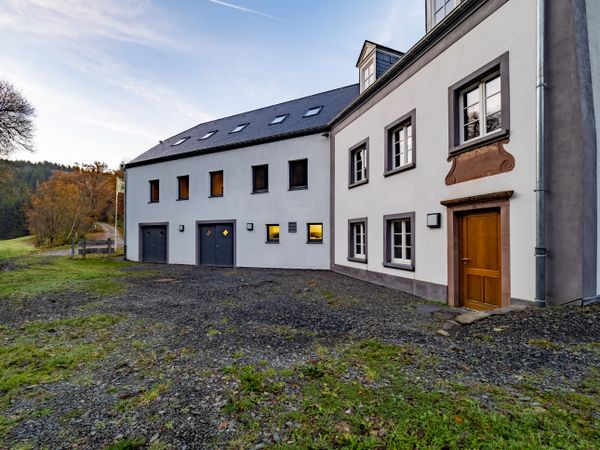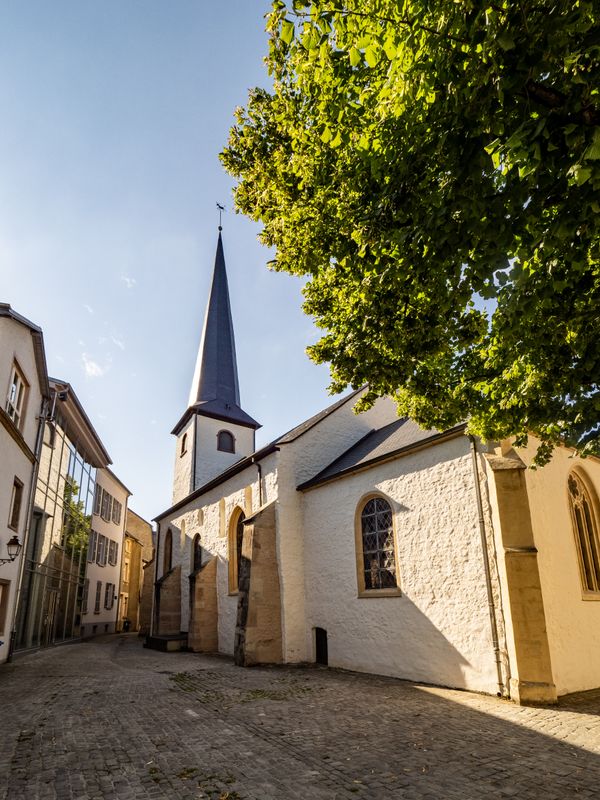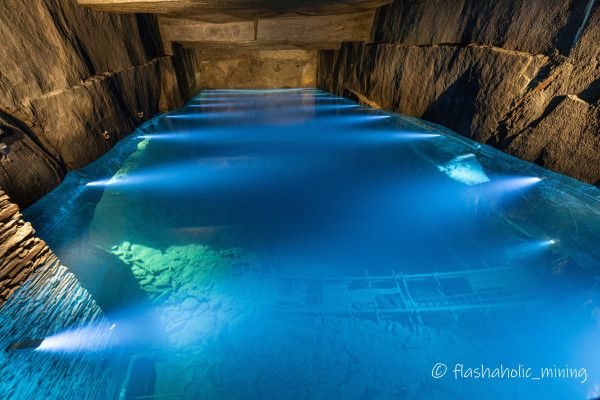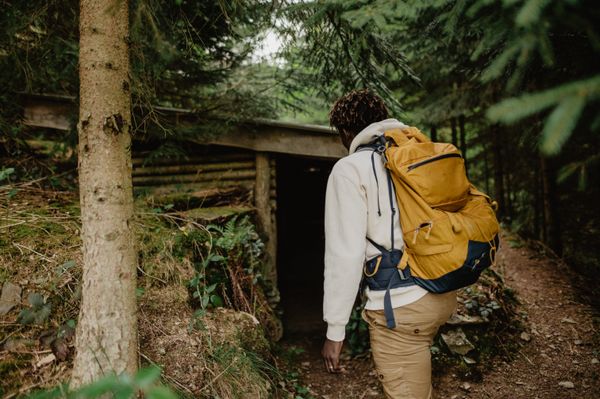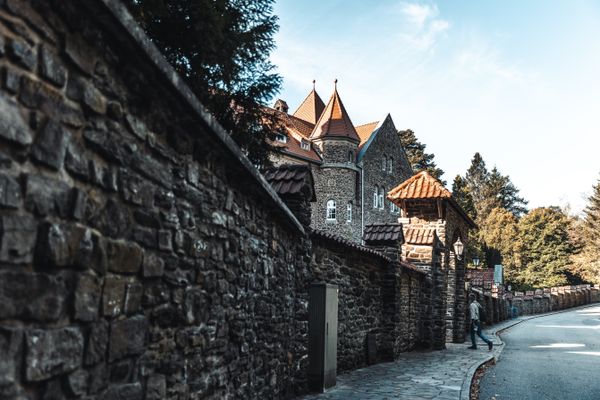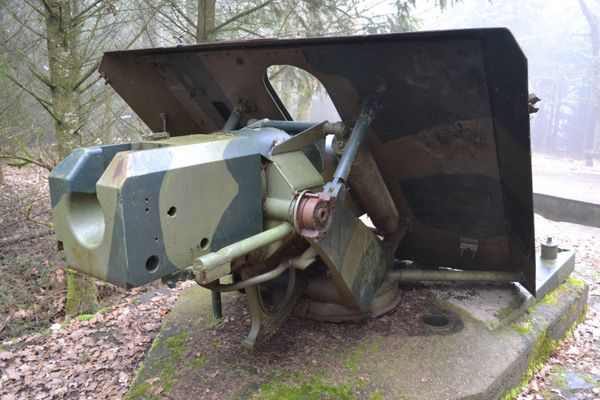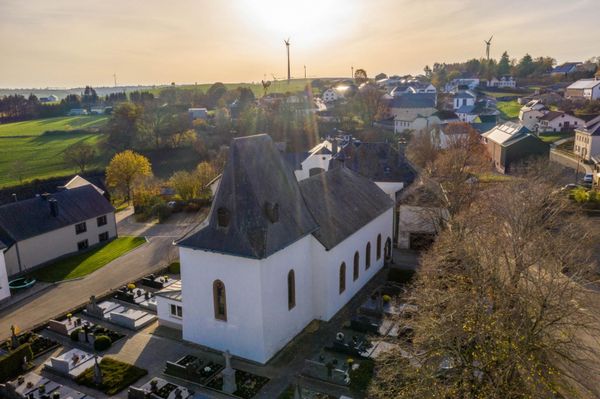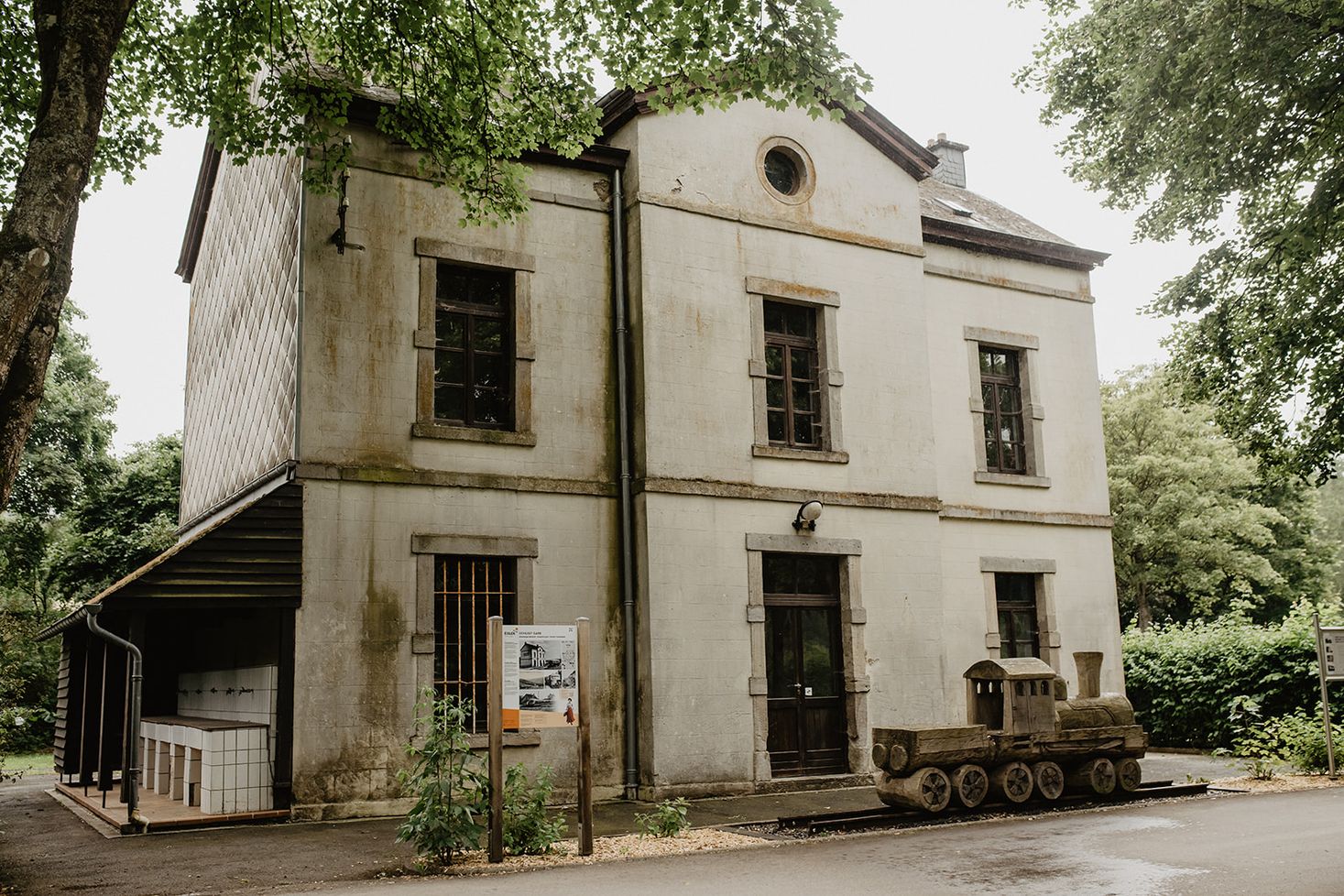
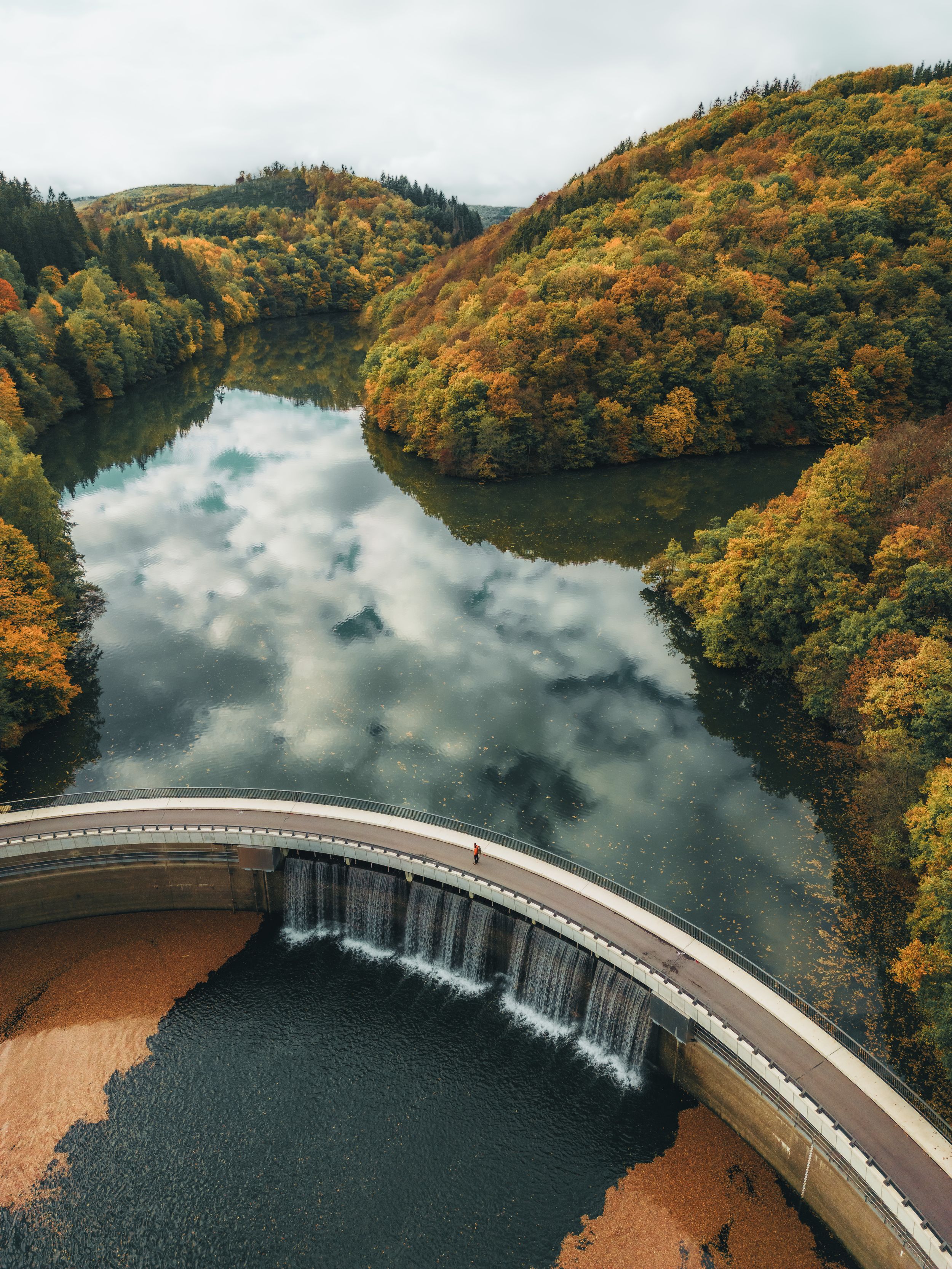
Esch-sur-Sûre dam
Where? L-9650 Esch-sur-Sûre
The impressive dam in Esch-Sauer was built between 1955 and 1958 and blends harmoniously into nature. Its arched design makes it a popular photo spot for photographers and nature enthusiasts.
The Esch-sur-Sûre Dam: A Marvel of Innovation and Utility
Discover the Esch-sur-Sûre dam, a masterpiece of engineering and innovation, whose curved arch design and concrete construction have shaped Éislek’s landscape since 1955.
The genesis of the Esch-sur-Sûre dam can be traced back to July 30, 1955, when the Minister of Public Works, Bodson, ceremoniously broke ground. This monumental project, guided by the visionary plans of French engineer André Coyne, not only revolutionized dam engineering at the time but continues to stand as a testament to innovative design and functionality.
Structural Ingenuity
The dam's architectural brilliance lies in its curved arch design, a pioneering approach in the 1950s. This architectural marvel spans 48.00 meters in length with a width of 4.00 meters at the foot and 1.50 meters below the roadway deck. Notably, the roadway boasts a width of 8.50 meters, inclusive of pavements. What sets this dam apart is its reliance on concrete with minimal metal reinforcement, a testament to the engineering confidence of the era.
Water Reservoir and Capacity
The Esch-sur-Sûre dam's primary function is water management, boasting a total reservoir capacity of 62 million m³, with an effective capacity of 53 million m³. This reservoir plays a pivotal role in preventing flooding in the village of Bavigne, maintaining a delicate balance with a maximum water level of 321.00 meters (reference level to the sea). The dam's design allows for a controlled water intake at 277.50 meters, ensuring both functionality and safety.
Hydropower Generation
The dam's significance extends beyond water management, as it serves as a powerhouse for electricity generation. Operational since February 15, 1960, the Esch-sur-Sûre power station harnesses the force of water through two main turbines at the dam's base and additional turbines downstream. The dam contributes to Luxembourg's energy grid, providing a substantial net electricity production of 10.0 GWk.
Dual Role: Drinking Water Production
In a dual role, the Esch-sur-Sûre dam also contributes significantly to Luxembourg's drinking water supply. In the late '60s, the construction of SEBES facilities concluded, adding drinking water production to the dam's repertoire. Today, SEBES, the operator of water production, covers approximately 70% of the nation's drinking water needs. The meticulous water collection system, installed during the 1993 lake draining, ensures the highest water quality standards.
Expansive Water Body
The transformation of the Sûre valley in 1959 marked the creation of a vast reservoir, covering approximately 400 hectares and stretching over 16 kilometres. This expansive water body submerged four houses and farms, altering the landscape but ultimately contributing to the region's water management and energy sustainability.
In conclusion, the Esch-sur-Sûre dam stands not only as a feat of engineering but as a versatile hub, influencing energy production, water management, and the overall sustainability of Luxembourg. Its enduring legacy continues to shape the nation's infrastructure and environmental stewardship.
Opening hours


